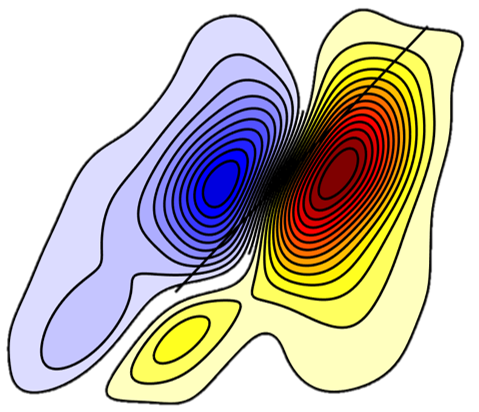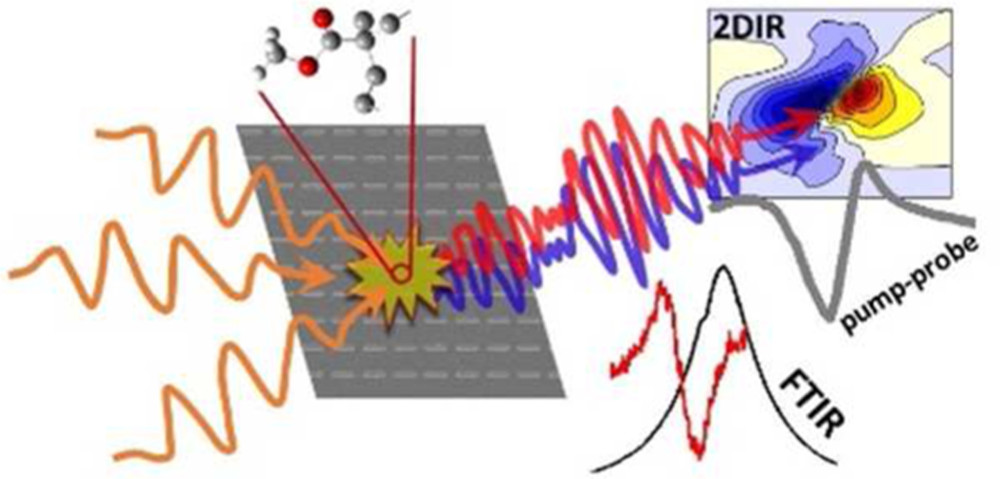Two-dimensional femtosecond infrared (2DIR) spectroscopy routinely provides insights into molecular structure and ultrafast dynamics in 1–100 μm thick bulk samples. Confinement of molecules to surfaces, gaps, crevices, and other topographic features, frequently encountered on the nanometer length scale, significantly alters their structure and dynamics, affecting physical and chemical properties. Amplification of 2DIR signals by the plasmon-enhanced fields around metal nanostructures can permit structural and dynamics measurements of the confined molecules. Fano resonances, induced by the interaction between laser pulses, plasmon, and vibrational modes significantly distort 2D lineshapes. For different detuning from plasmon resonance, the interference between multiple signal components leads to different line shape asymmetry, which we demonstrate on a set of linear absorption, transient absorption, and 2DIR spectra. An intuitive model used to describe experimental data points to the interference’s origin. Our results will facilitate the application of surface-enhanced 2DIR spectroscopy for studies of molecular structure and dynamics in a nanoconfined environment.
Authors: Andrey Gandman, Robert Mackin, Bar Cohn, Igor V Rubtsov, Lev Chuntonov




